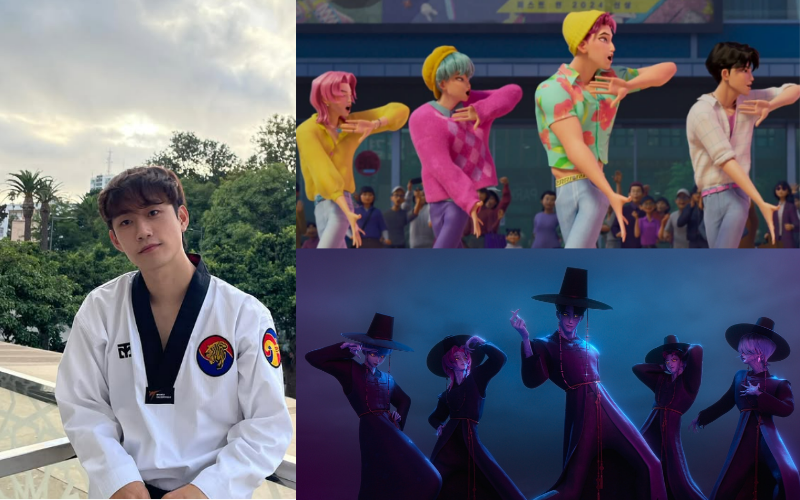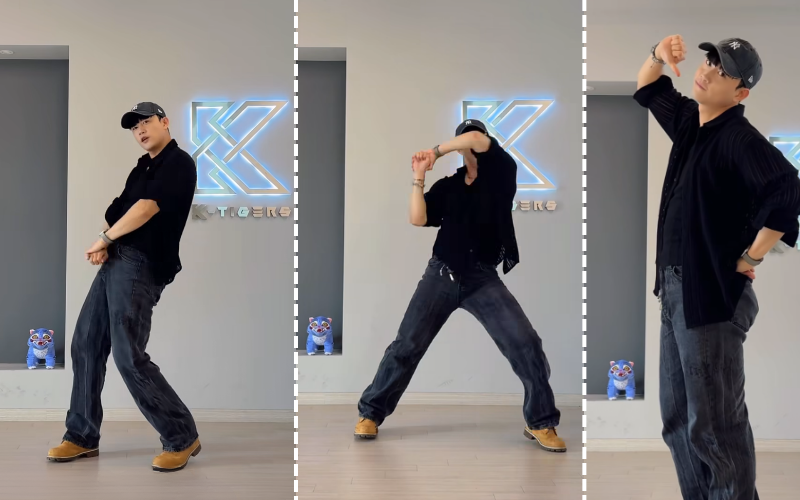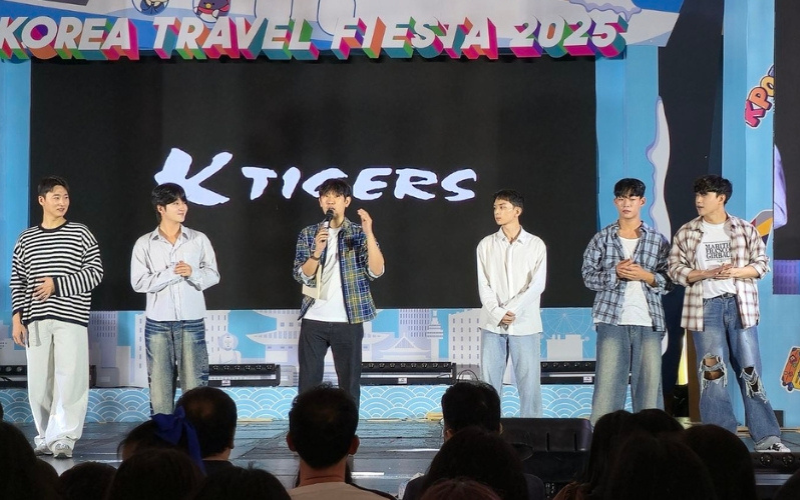
Ha Seong Jin has dedicated more than two decades to Taekwondo. Fascinated as a child by a Taekwondo performance, he decided to pursue the martial art seriously and joined the world-renowned K-Tigers at the age of 14. For the past 16 years, he has been an active member of the group, working not only as a performer but also as a choreographer and head of the training team. He also holds the 4th Dan in Taekwondo. Today, Ha is recognized for his innovative fusion of Taekwondo with K-pop and other cultural elements, which has brought new visibility to Korea’s traditional martial art on international stages. Most recently, he choreographed parts of KPop Demon Hunters, a global project by Netflix and Sony Studios, where his dynamic movements translated directly into animated characters.
The following are excerpts from an email interview with Ha, conducted between September 1 and 19, on his inspirations and his work as a choreographer fusing Taekwondo with K-pop for the animated film KPop Demon Hunters.
-In your own words, what do you think Korean Taekwondo represents today — not only as a martial art, but also as part of Korean culture?
I believe Taekwondo can be more than just a martial art, it can also be an art form. When combined with other cultural elements and genres, it fits naturally and can showcase Korea’s artistic side to the world.
-How has Taekwondo shaped your life values or philosophy outside of training and performance?
Taekwondo has taught me that it can be used as a foundation to create new content. My goal is to establish Taekwondo choreography as its own genre and make it an important part of Korean culture within international exchange.
-How did you first transition from being a Taekwondo athlete to becoming a choreographer?
I never formally studied dance, but I’ve always loved it. Through the discipline of “Taekwondo Gymnastics,” I became more interested, and eventually I thought: I’d like to use Taekwondo to create choreography.

-When you create new choreography, do you start with the music, the movement, or the Taekwondo techniques you want to highlight?
First, I try to understand the song’s concept. Then I choose the main Taekwondo movements that could serve as highlights. After that, I combine music, Taekwondo, structure, and technique to tell a complete story.
-What are the biggest challenges and opportunities when fusing Taekwondo with modern dance and K-pop elements?
The biggest challenge is keeping the unique characteristics of K-pop and dance intact while blending Taekwondo in a way that feels harmonious. The opportunity lies in creating something that is uniquely Korean while still being globally accessible.
-Choreographers often develop a “signature move” or defining element that makes their work recognizable. What would you consider yours?
My goal is always to create choreography that feels powerful and unique. That’s why the dynamic techniques of “Extreme Taekwondo” have become my signature. Honestly, I think all Taekwondo moves are impressive, many can be combined with dance movements and deliver strong impact. But the elements of Extreme Taekwondo fascinate me the most, because they are the most expressive.
-How did the opportunity arise to work as a choreographer for KPop Demon Hunters with Netflix and Sony Studios?
At first, they only asked me to design action scenes. Then I was contacted to also create choreography. Initially, I was asked to develop Soda Pop and How It’s Done, and later Your Idol and Golden were added. For each track, I prepared three different drafts. In the end, Soda Pop and Your Idol were chosen.
-You choreographed the songs Soda Pop and Your Idol. Could you describe the concept and inspiration behind each?
The concept for Soda Pop was meant to feel fresh, bright, and youthful, like a debut song that draws people in. When I first listened to it, the sound of a soda can opening really stood out. I decided to blend classic Taekwondo moves such as face blocks, groin strikes, knife-hand blocks, and palm strikes to amplify the song’s energy.
Your Idol, on the other hand, had a darker, more mysterious concept, the idea of seducing and captivating souls. So I created movements where it looks as if you’re holding a “ghost fire” in your hands and lifting it upward, as though drawing a soul to yourself.
-What was the most challenging aspect of designing choreography for an animated film, compared to working with live performers?
Since my movements were directly translated into animation, every angle and gesture had to be exact. I paid close attention to each detail to make sure the transitions connected smoothly.
-Can you describe your collaboration with the animation and production team, and how it differed from working only within a dance team?
The production team came directly to our studio and set up 360-degree cameras all around. When they saw us performing Extreme Taekwondo — flips, jumps, spins — they were amazed and really enjoyed it. Their excitement gave us so much energy, and I think that’s why my choreography ended up being selected.
-How did you approach the idea of incorporating Taekwondo skills into K-pop-style choreography for the movie?
Since the “Lion Boys” in the film are both dancers and fighters, I decided to weave Taekwondo elements into their choreography. This way, it could showcase Taekwondo not just as sport, but also as something aesthetically powerful.
-Since the movie is gaining huge international attention, how does it feel to see your choreography as part of a global cultural project?
It’s a great honor to participate in an animated film that presents Korean culture to the world. I’m especially grateful that my Soda Pop choreography has been picked up by many actors and idols in social media challenges. If there’s ever another sequel and they call me, I’d gladly join again with full passion.

-You recently attended the Korea Travel Fiesta 2025 in the Philippines. What did you perform there?
We performed traditional Taekwondo, K-pop Taekwondo, and also parts of the KPop Demon Hunters choreographies. It was the first time we showcased the full Soda Pop choreography in the Philippines, and the audience loved it. That made me really happy.
-What are your goals as a choreographer and Taekwondo artist for the future?
If I keep receiving opportunities like this, I want to continue combining Taekwondo with diverse cultures and share it worldwide.
-Finally, what message would you like to share with young Taekwondo practitioners and dancers around the world who look up to you and the K-Tigers?
First of all, thank you so much for showing interest in Taekwondo, Korea’s traditional martial art. Please always take care of yourselves during training, performances, and competitions, avoid injuries, and I hope that someday we’ll meet in person.
Ha Seong Jin’s journey shows how Taekwondo can transcend the boundaries of sport and evolve into an expressive art form. Through his work with the K-Tigers and projects like KPop Demon Hunters, he demonstrates how choreography rooted in tradition can resonate with global audiences. His vision, to establish Taekwondo choreography as its own genre and a proud element of Korean cultural exchange, highlights both his creativity and his commitment. Whether on stage, in film, or in international festivals, Ha continues to inspire the next generation of martial artists and dancers by proving that tradition and innovation can thrive side by side.
How about this article?
- Like2
- Support0
- Amazing1
- Sad0
- Curious0
- Insightful0


